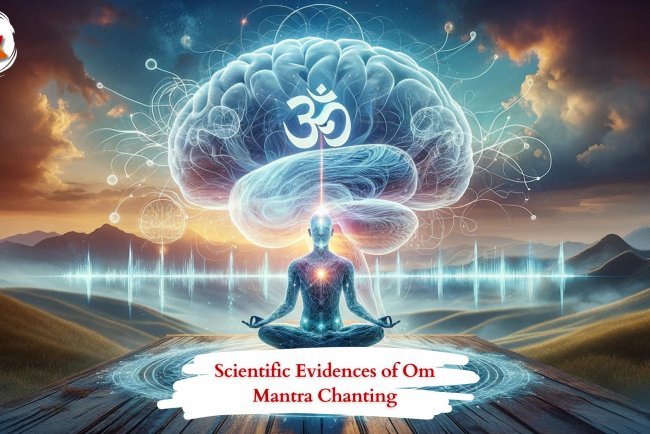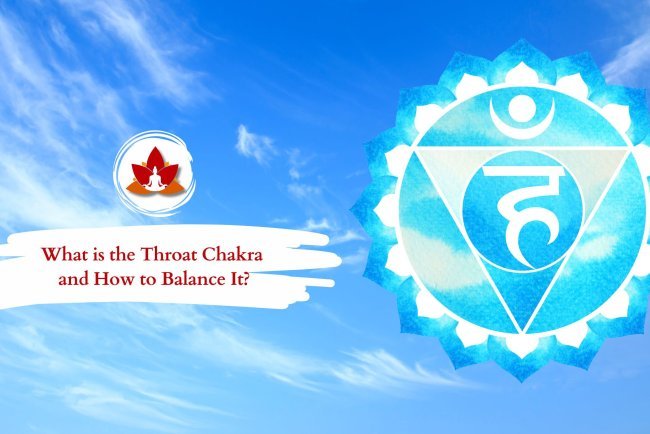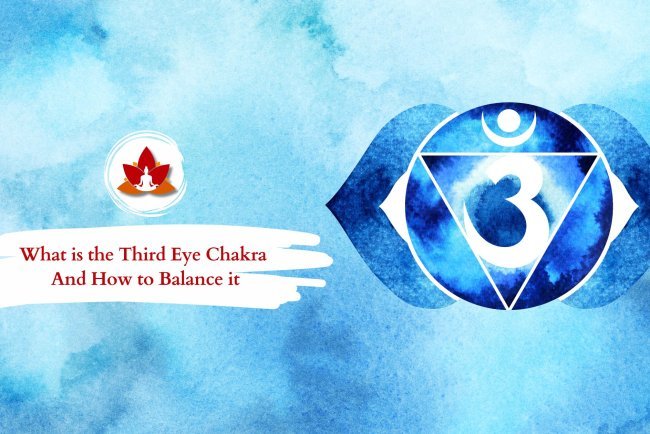What is Root Chakra and How to Balance it

Within the realms of spiritual as well as energy healing practices, Chakras are considered to be the vital points in the human body that govern the aspect regarding one's physical, emotional, as well as spiritual well-being. Deriving from the ancient Sanskrit word for "wheel," chakras are regarded to be located all over the body, described as spinning disks of energy, positioned from the base of the spine to the crown of the head. Each chakra is associated with specific organs, emotions, colors, and elements that together contribute to the holistic balance of mind, body, and spirit.
The first of the seven main chakras is called the Root Chakra, or Muladhara Chakra. This is the foundation of the entire energy system of the body. The Root Chakra at the base of the spine, is connected with the Earth element. It manifests safety and security, deals with survival issues, and is the grounding force connected to the Earth. These roots support us to feel stable, balanced, and secure in our lives. There is stability with a complete sense of confidence only when the root chakra is balanced. However, when it is blocked or out of balance, it can lead to insecurity, fear, anxiety, and sometimes physical ailments related to the lower body.
This ultimate comprehensive guide will cover all that you need to know concerning the Root Chakra (Muladhara) including its importance and signs and symptoms of imbalance. We will be diving deep into the Root Chakra's attributes, including associated elements, color, symbol, and mantra, to show how all these things play a big role in releasing and activating emotions and mental health. You will learn about the emotional and physical symptoms of a blocked Root Chakra as well as powerful healing practices, such as affirmations, grounding meditations, and yoga poses, to unblock and balance your Root Chakra energy. Whether you are a newcomer to chakra healing or you want to enhance your skills, this article will be of high value, providing you with lots of insight and practical tools to help strengthen your foundation, thus enhancing your well-being in all possible ways.
What Is the Root (Muladhara) Chakra?
The first and foundational energy center in the body's energy system is known as the Root Chakra or Muladhara Chakra. It is our foundation and nucleus, dictating our sense of safety, stability, and survival. Any individual who claims an interest in holistic well-being, spiritual development, or energy healing would do well to learn about the Root Chakra. This article will outline a definition of the Root Chakra, its role in diverse spiritual disciplines, and its position as the base of an energy system.
Where Is the Root Chakra Located?
This root chakra lies at the base of the spine close to the tailbone and extends around the perineum, the first three vertebrae, and the floor of the pelvis. Located there, it anchors our energy on the planet, forming a solid foundation from which we might construct our lives.
Association with the Perineum, Vertebrae, and Pelvic Floor
The Root Chakra operates at the base of the spine, it is more than a point upon the physical body; it speaks to our grounding and connection to the physical world. Located around the perineum, it would seem, the muscular and tissue hub important to body functions and body stabilizing.
Perineum: The seat or root area in which the energy of the Root Chakra is embedded; it is the heart of grounding practices and at the center of safety, security, and physical survival.
The first three vertebrae: The first three vertebrae of the spine also support the body structure, speaking of their root connection with the first three vertebrae of the spine. This correlates the chakra with providing stability, equilibrium, and support to the material and energetic levels.
Pelvic Floor: The underlying muscles in the pelvic floor support the organs of the pelvis; the well-developed, healthy pelvic floor muscles are essential for maintaining grounding and balance in the Root Chakra to relate to an overall healthy body, a stabilized emotional life, and a sense of being with the present.
Also Read: Aura Colors and Their Meanings
Why Location Matters for the Root Chakra
Knowing the exact spot where the Root Chakra sits holds the key to doing grounding practices, and meditations and yoga asanas on the spot about this energy center. You then gain access to be able to meditate or practice yoga by bringing your attention to the base of your spine, tailbone, and pelvic floor to connect with the grounding energy of the Root Chakra.
A balanced Root Chakra gives an individual a sense of security, stability, and oneness with the world. An imbalanced or blocked Root Chakra may express itself in physical terms such as lower back pain or emotional distress - fear, anxiety, or insecurity. By attention given to the location of the Root Chakra, grounding practices can be aided in letting go of such blockages to promote safety and well-being.
What Is the Root Chakra Responsible For?
Root Chakra, the root of our being, is associated with our instincts to survive along with the basic human needs. It includes our sense of belonging, personal identity, and our emotional stability. A balanced Root Chakra imparts a sense of grounding, safety, and control over one's life.
Characteristics of the Root Chakra: Element, Color, Symbol, and Mantra
The characteristics of the root chakra are based on the following aspects :
Element: Earth – it is stability, strength, and solid ground.
Color: Red – represents vitality, passion, and energy.
Symbol: A four-petaled lotus flower with a square and a downwards pointing triangle that symbolizes stability, or grounding.
Mantra: "LAM" when chanted helps activate and balance the Root Chakra.
Emotions, Mental Health, and the Root Chakra
The Root Chakra is linked with the earth element and has to do with feeling safe, secure, and alive. In this case, when the chakra is in balance, the individual will feel well-grounded, secure, and confident. However, if the Root Chakra is imbalanced, it can lead to several emotional and mental problems that range from fear to anxiety, and insecurity.
How Root Chakra Is Linked to Feelings of Fear, Anxiety, and Insecurity
The Root Chakra is so connected with survival instincts and the most basic of needs such as food, shelter, and safety. It is the energy center that keeps you in tune and in touch with the world you walk in, keeping you up and grounded. And when the Root Chakra is blocked or out of balance, all types of emotional symptoms can surface, especially those related to fear and anxiety.
Fear: Fear and fear of the unknown will arise when the root energy center is blocked. When this energy center is not balanced, we feel threatened or fearful that our basic needs will not be met.
Anxiety: The other emotional symptom of an out-of-balance Root Chakra is anxiety. When we do not feel the usual stability and grounding, our minds can go wild; we worry unnecessarily and make many stressful, nonstop moves toward the future. It has a feeling of being unrooted or disconnected from Earth.
Insecurity: A balanced Root Chakra manifests a healthy feeling of grounding and stability in life, along with an element of selfness. The imbalance makes people insecure about many aspects of life relationships, family, career choices, etc. It creates a sense of a lack of self-confidence, which makes one look for reassurance about his worth from others all the time.
Mental Well-being Impact: Balanced versus Imbalanced
Such states of the Root Chakra, therefore, do significantly impact a person's mental health and emotional well-being. It is possible to know the difference between a balanced and an imbalanced Root Chakra to identify the problems with that particular chakra and move a step further toward healing.
A balanced Root Chakra allows us to feel solid and secure in our place within the world. It then becomes a basis from which all of the other chakras arise, underpinning the emotional strength. We can trust ourselves and our abilities are never anxious or fearful. A calm and steady mind renders us safe, connected, and able to deal with whatever life throws our way.
An imbalanced Root Chakra can thus lead to a myriad of psychological issues. When blocked or over-activated, the Root Chakra can be a source of fear, anxiety, restlessness, and insecurity. When one's Root Chakra is unbalanced, an individual may be plagued with constant worries, or even subject himself to panic attacks, and will soon find himself decoupled from reality. He may feel he is stuck in survival mode, or cannot get moving with his life.
Also Read: 300 Hour Yoga Teacher Training In Rishikesh
Signs & Symptoms of a Clogged Root Chakra
A blocked or imbalanced Root Chakra can manifest as an emotional symptom and physical symptom:
Emotional Symptoms: Insecurity feelings, anxiety, fear, lack of trust. Trouble concentrating and deciding, being isolated from one's self as well as others.
Physical Symptoms: Lower back pain, leg and feet problems, constipation, fatigue, and issues that relate to bones and joints. An unbalanced Root Chakra may even indicate a weakening of the immunity system.
Root Chakra Healing: How to Unblock and Balance
The healing of the Root Chakra is a series of activities that facilitate grounding and stability.
Activities like walking barefoot on earthy surfaces tilling the soil for a garden or spending time in nature can thus help to link up with the Earth, in turn, balancing your Root Chakra.
Root Chakra Meditation: Do a meditation on your Root Chakra, by letting go of any form of obstruction or harmony by visualizing a red light at the base of the spine that would course through while chanting "LAM".
Root Chakra yoga poses: Some of the postures which help you to generate a sense of grounding and balance of the Root Chakra are Mountain Pose (Tadasana), Tree Pose (Vrksasana), and Warrior I (Virabhadrasana I).
Aromatherapy and Crystals: The essential oils for the treatment of your Root Chakra are sandalwood, patchouli, and cedarwood. The respective crystals for Root Chakra healing are red jasper, hematite, and black tourmaline.
Affirmations: affirmations can also be of help in reprogramming negative patterns of thought that are linked with an imbalanced Root Chakra. Examples include: "I am safe and secure," "I am grounded," and "I trust in the process of life."
Grounding Root Chakra Meditation
A person can engage in grounding meditation to balance the Root Chakra. Here's an easy how-to guide:
- Select a quiet place, then sit comfortably with the back straight and enjoy it.
- Sit comfortably, shut your eyes, and breathe 2-3 deep breaths to calm yourself.
- Imagine a glowing red light starting from the base of your spine. Visualize it intensifying with each breath and spreading from it.
- Meditate by saying the mantra "LAM" either aloud or silently.
- Reflect on this feeling within you which feels as if you must connect with the earth as if you are rooted to the ground just like a tree.
- Meditate for 5-10 minutes or whatever length of time feels appropriate to you.
10 Root Chakra Yoga Poses to Energize and Balance
Muladhara Energy Yoga is one of the best ways to balance the Root Chakra, and below are 10 yoga poses that would help you come closer to your core:
- Mountain Pose (Tadasana)
- Tree Pose (Vrksasana)
- Warrior I (Virabhadrasana I)
- Warrior II (Virabhadrasana II)
- Garland Pose (Malasana)
- Child's Pose (Balasana)
- Bridge Pose (Setu Bandhasana)
- Easy Pose (Sukhasana)
- Downward-Facing Dog (Adho Mukha Svanasana)
- Corpse Pose (Savasana)
These postures stabilize your energy, build your inner strength, and provide you with a sense of stability.
Conclusion
Balancing the Root Chakra brings well-being in the body, in the realm of the emotional sphere, and in the spirit. It incorporates exercises, meditation, yoga, affirmations, or other holistic practices into your everyday life and develops strength in a feeling of security over your life and existence. Reconnect with your roots today and discover the strength and stability that a balanced Root Chakra creates.
What's Your Reaction?





























